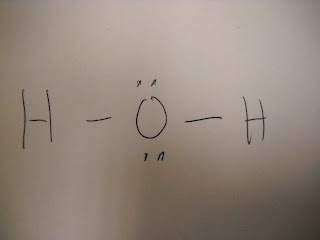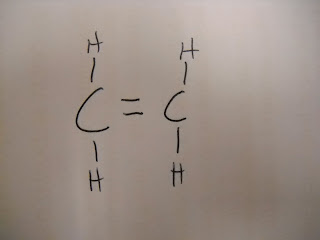Materials: Apron, Goggles, Problem, Pencil, Lab Station, Burner, Asbestos Pad, Gas, Lighter, Brain!
Procedure:
1. We Obtained a medium sized (250 to 400 ml) beaker
2. Added 80 to 100 ml of water to beaker; set up apparatus to heat your mixture over a bunsen burner and began heating
3. We measured out about 9g of copper (II) sulfate pentahydrate (CuSO4 x 5 H2O) and recorded the mass in our data table. Then slowly added the crystals to heating water.
4. With a glass stirring-rod, we stirred the solution until the copper II sulfate pentahydrate is dissolved.
5. While the copper sulfate crystals are dissolving crawford went and got the alumminum. he carefully weighed out the aluminum to be 8.5 grams. We recorded the mass in our data table
6. We carefully poured the aluminum into the solution of water and copper. Continuously stirring
7. we slowly watched the aluminum dissapear we then removed all heat from the solution
8. We wrote our names around the outsides of the filter paper weigh and record the mass in the data table
9. We then filtered the matterial out of the mixture by using the filter paper
10. We then rinsed out the beaker
11. we removed the filter paper from the funnel and spread it out on a paper towel to dry overnight
12. Upon returning the next day. Weigh the filter paper and dry residue and recorded that mass in the data data. We then threw it away.
13. we constructed a Data Table with the following parts: mass for Copper II sulfate pentahydrate, Mass of Aluminum Foil, mass of coffee filter, mass of dry residue/product +filter paper.
Results
Single displacement reaction
Mass of coffee filter- .8 grams
Mass of aluminum foil- .85 grams
Mass of copper(II) sulfate- 9 grams
Net weighed mass of dry filter paper- 1.95 grams
Amount of aluminum sulfate produced- 1.15 g
Weight Table
| Mass in grams | |
| 9 | Cu(II)So4 |
| 0.85 | Al foil |
| 0.8 | Coffee filter |
| 1.95 | Dry residue Product |
| 1.15 | Al2(So4)3 |
Analysis
Balanced equation- 3Cu(II)So4 + 2Al > 3Cu + (So4)3Al2
Limiting reagent- Aluminum foil
Theoretical yield- 3.00 grams
Actual yield- 1.15 grams
Percent yield- .38%
Discussion
The deviation of the actual yield from theoretical yield can be described by three reasons. Temperature might not have been sustained enough to enable full chemical displacement. second, residue from previous chemical reactions could have interfered with the chemical reaction. third, the reaction took place at 2000 feet above see level. this could have had effects as to the reaction of the chemical due to boiling point differences.
In conclusion, we better understand the use and application of stoichiometry through a hands on demonstration. are ability to adequately follow instructions was tested and passed. our confidence is through the roof and our ability to learn has been increased.
















